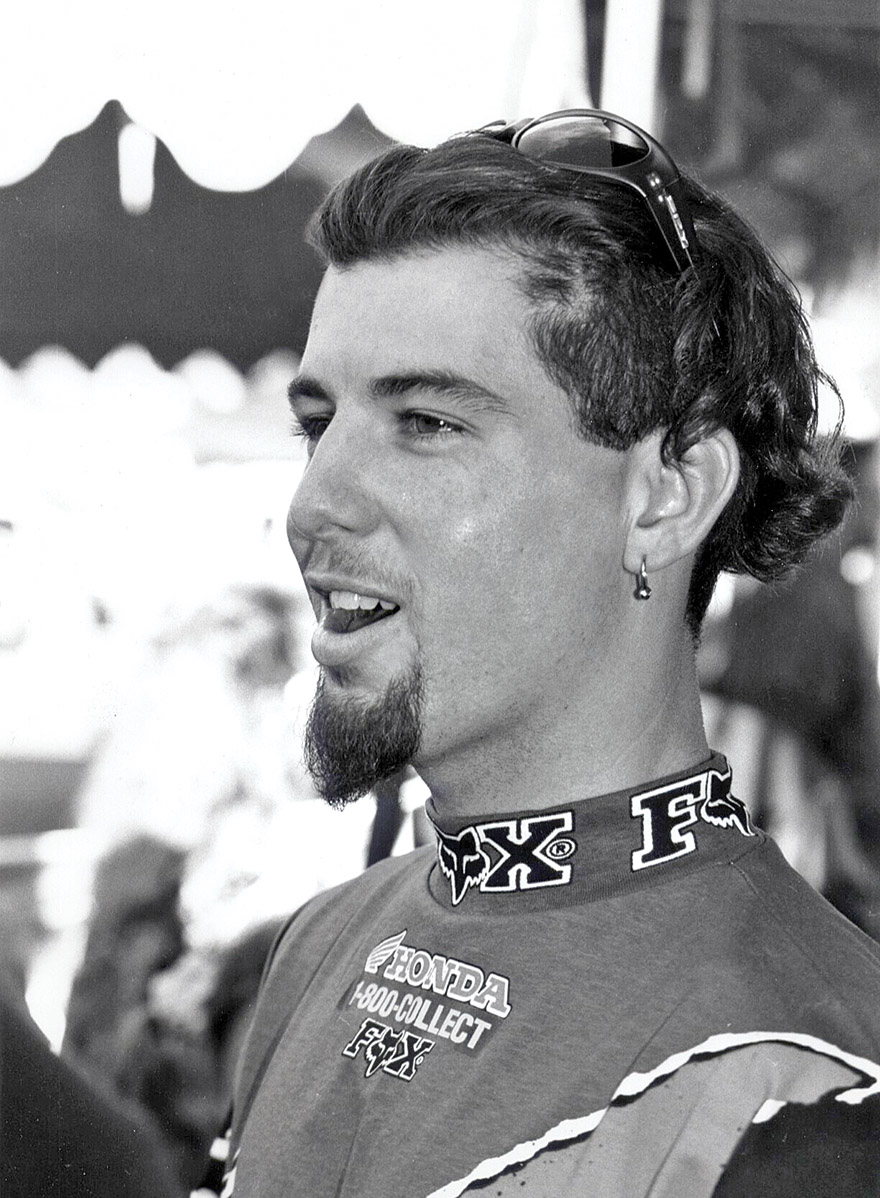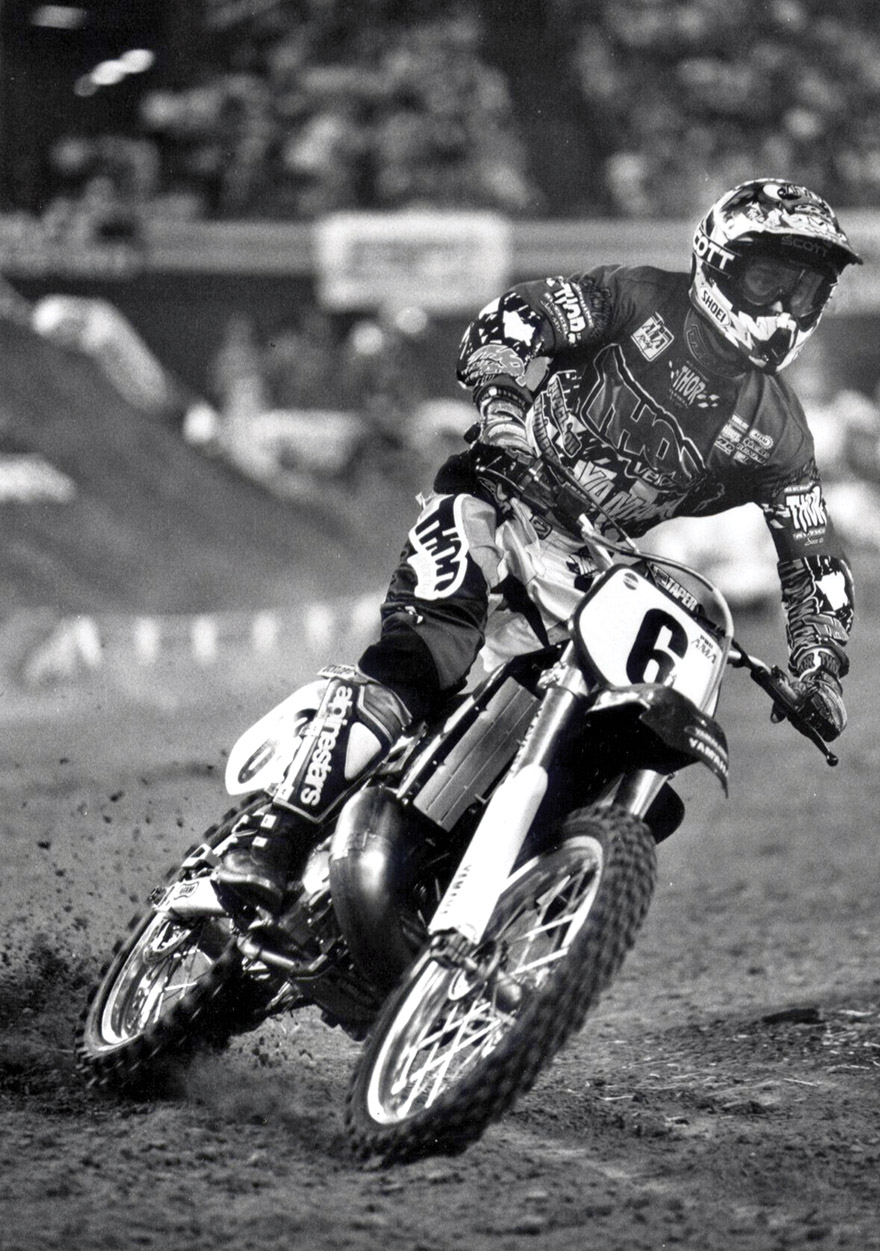FLASHBACK FRIDAY | THE NIGHT THE LIGHTS WENT OUT IN VEGAS
 Jeremy McGrath helped spearhead the rider’s movement at the 1995 Supercross finale in Las Vegas, citing poor lighting conditions.
Jeremy McGrath helped spearhead the rider’s movement at the 1995 Supercross finale in Las Vegas, citing poor lighting conditions.
The idea of a riders’ union isn’t new. It seems that once every decade there’s a brouhaha about it that sprouts up as a result of the AMA’s insolence. Would you believe that 20 years before the Chad Reed/Trey Canard black flag incident at the Anaheim II Supercross this year there was an even greater controversy? Infamously known as “The night the lights went out in Las Vegas,” the 1995 Supercross finale served as a wake-up call to the powers that be that the riders were fed up.
It all began with a blown transformer that knocked out power to 80 percent of Las Vegas. That included Sam Boyd Stadium, which didn’t get its generators fired up for 1-1/2 hours. During that time, a high-profile contingent of riders banned together and elected not to race with temporary lighting. The big names? Jeremy McGrath, Mike Kiedrowski, Doug Henry, Mike Craig and Brian Swink. Factory riders and privateers alike decided to band together, refusing to risk their lives to put on a show for a callous governing body (the excuse was poor lighting conditions).
 Jeff Emig won the Las Vegas finale in Jeremy McGrath’s absence.
Jeff Emig won the Las Vegas finale in Jeremy McGrath’s absence.
To quote Jeremy McGrath in our exclusive coverage of the debacle, “Supercross is dangerous enough when we have to ride on muddy or rutted-out tracks. At Las Vegas, it was too dark! I have to think about the 250 National Championship now, and I didn’t want to take any unnecessary risks. The promoters should have postponed the race until Sunday afternoon.” However, that didn’t happen. Instead, riders like Larry Ward, Greg Albertyn, Jeff Emig, John Dowd and Mike Brown went against the grain and raced anyway. Jeff Emig won, although by then McGrath had clinched his second consecutive Supercross title. There were only 14 riders left in Sam Boyd Stadium for the race.
THE STRIKERS’ COMPLAINTS WERE NOT SOLELY ABOUT THE DIMLY LIT TRACK; THEY WERE ALSO PROTESTING POOR TRAVEL SCHEDULES, INFERIOR TRACK DESIGNS, SMALL PURSES AND THE LACK OF A POINTS FUND.
The real power players in the whole situation were the manufacturers. Bound by what the factory teams decided, it was readily apparent that brands like Yamaha and Suzuki, along with Honda of Troy, didn’t want to go up against the AMA/AIR brain trust. They encouraged their riders to compete, or at least go out for the sighting lap to determine whether the racetrack was safe. The strikers’ complaints were not solely about the dimly lit track; they were also protesting poor travel schedules, inferior track designs, small purses and the lack of a points fund.
 Greg Albertyn was one of the riders that decides to ride in the bad lighting in Vegas. He placed 4th on the night.
Greg Albertyn was one of the riders that decides to ride in the bad lighting in Vegas. He placed 4th on the night.
In an indirect way, the events that transpired on June 10, 1995, reshaped the trajectory of Supercross. Venues have improved, race winnings have increased, there is a points fund now, and riders feel less like pawns and more like equal players in a booming sport. Unfortunately, one thing remains true after all these years, and that’s the AMA’s inability to protect and serve those who are most important—the racers.





Comments are closed.